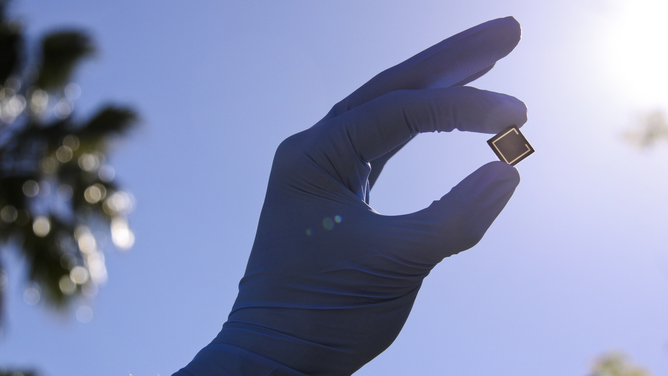Two Stanford labs received a total of $1.59 million from the Department of Energy for continued research in the development of solar cells. The two labs receiving grants are the Dauskardt lab and the McGehee lab.
The labs are experimenting with perovskite, which has shown impressive potential for harvesting energy efficiently and affordably. Perovskite can be dissolved into a liquid, allowing it to more easily coat surfaces. According to materials science and engineering professor Michael McGehee, scientists can spin coat, slot die or print perovskite onto a solar cell surface.

The promising prospect of perovskite is due to its lower prices and improved efficiency compared to silicon, the current solar cell standard. Furthermore, silicon must be first processed as solid ingots before being sliced into thin discs.
“There are really only five families of materials that have done better than 20 percent [efficiency], and of those five, [perovskite] is the only one that can be printed,” McGehee said.
The research funds will allow each lab to pursue novel directions for study.
McGehee plans to layer perovskite over silicon to absorb a broader range of light. Perovskite collects light from the visible spectrum while silicon collects infrared.
“We’re going to put a perovskite solar cell right on top of a silicon solar cell, and we’re going to get an efficiency higher than you can get with either cell by itself,” McGehee said.
Materials science and engineering professor Reinhold Dauskardt’s plans involve isolating small sections of perovskite from each other in a scaffold. While perovskite is cheap and easily deposited, it is unstable, according to Dauskardt. He will also look into directing light specifically at the perovskite cells and not the scaffold itself.
“We’re looking at ways of making little tiny solar cells, basically like the eye of the fly, where we make a little scaffold and then fill each one of these scaffolds, and tens of thousands of them, so each one is protected,” Dauskardt said.
Looking ahead, McGehee says there are many future developments in solar technology that could lead to its widespread use. According to him, it will take five to 10 years until solar technology starts to rapidly innovate. McGehee predicts that while the prices of perovskite and silicon may not drop, scientists will find ways to increase their energetic efficiency.
“It’s part of a puzzle of how to provide energy that’s renewable and doesn’t cause the kind of damage [as fossil fuels do] to our environment,” Dauskardt said.
Contact Jessica Jen at jessicajen23 ‘at’ gmail.com
